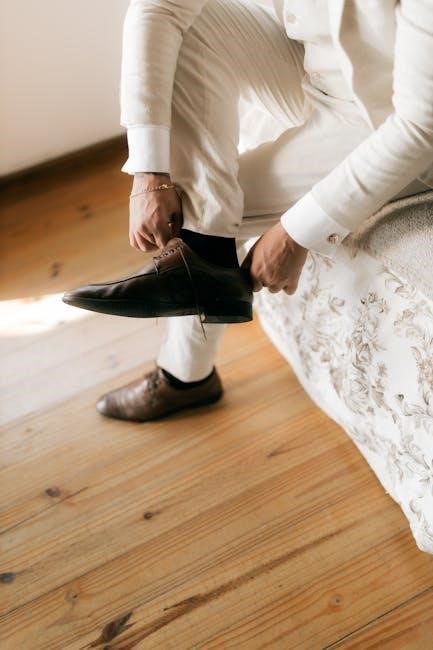Shoes are essential for protection, comfort, and style, playing a vital role in daily life. This guide explores their history, types, materials, and current trends, helping you make informed choices for your footwear needs while balancing spending habits and personal preferences.
Overview of the Importance of Shoes in Daily Life
Shoes are indispensable in daily life, serving as a foundation for comfort, protection, and confidence. They shield feet from environmental hazards and physical stress, ensuring safety and hygiene. Whether for casual outings, sports, or formal events, shoes adapt to diverse needs, enhancing performance and style. Beyond functionality, they reflect personal identity and cultural trends, making them a vital part of self-expression. With proper fit and care, shoes contribute to overall well-being, preventing discomfort and injuries. As trends evolve, understanding shoe types and spending habits helps in making informed choices, balancing wants and needs effectively; Thus, shoes are not just footwear but essential companions in everyday life.
Why Understanding Shoe Types and Features Matters
Understanding shoe types and features is crucial for making informed decisions tailored to your lifestyle and needs. Different activities require specific shoe designs, such as cushioning for running or stability for golf. Knowing the materials, like leather or mesh, and technologies, such as EVA soles, ensures optimal comfort and performance. This knowledge helps avoid impulse purchases and guides investments in durable, functional footwear. By recognizing trends and spending habits, you can balance wants and needs effectively. Whether for sports, formal events, or casual wear, understanding shoe types empowers you to choose wisely, enhancing both comfort and style while aligning with current and future footwear trends.
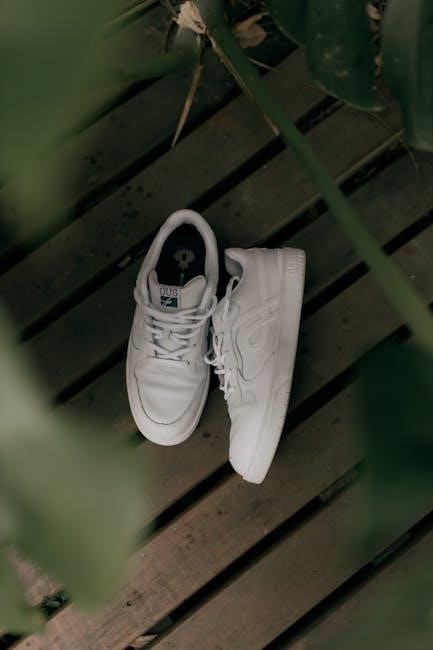
History of Shoes
Shoes have evolved from primitive foot coverings to sophisticated designs, serving protection, comfort, and style. Their development reflects human ingenuity and cultural adaptation over centuries.
Evolution of Shoe Design Over the Centuries
Shoe design has transformed significantly over centuries, reflecting cultural, technological, and functional shifts. Early civilizations used simple materials like leather and woven fibers for protection. By the Middle Ages, shoes became status symbols, with intricate designs for the elite. The 20th century saw the rise of athletic footwear, blending performance with style. Modern designs incorporate advanced materials like mesh and rubber, prioritizing comfort and durability. From ancient sandals to sleek sneakers, shoe evolution mirrors human innovation and changing lifestyles, blending practicality with aesthetic appeal.
Key Milestones in Shoe Manufacturing Technology
The evolution of shoe manufacturing technology has been marked by significant advancements. The 19th century saw the introduction of the sewing machine, enabling mass production. The vulcanization of rubber in the mid-1800s led to durable soles. The 20th century brought synthetic materials and injection molding, allowing for more versatile designs. Modern technologies include 3D printing for customized fits and automation for efficient production. These innovations have transformed shoe-making, blending tradition with cutting-edge methods to meet global demand for comfort, style, and performance. Each milestone has paved the way for sustainable practices, ensuring shoes remain a vital part of daily life while adapting to future needs.

Types of Shoes
Shoes vary widely, from athletic and formal to casual and specialty options, each designed for specific activities, ensuring comfort, performance, and style for diverse needs and preferences.
Athletic Shoes: Running, Training, and Sports
Athletic shoes are designed for performance and comfort during physical activities. Running shoes often feature cushioning and support for long-distance comfort, while training shoes prioritize versatility. Sports-specific shoes, like those for tennis or pickleball, are tailored to meet the demands of the game, offering stability and traction. New Balance’s Fresh Foam technology is a popular choice for runners, providing superior cushioning. When selecting athletic shoes, it’s crucial to consider your activity type, foot shape, and any potential injuries. Trying them on and walking around the store can help ensure a proper fit. Investing in the right pair can enhance performance and reduce the risk of discomfort or injury during workouts or competitions.
Formal Shoes: Dress Shoes, Loafers, and Oxfords
Formal shoes are essential for professional and elegant occasions, offering both style and sophistication. Dress shoes, such as Oxfords and loafers, are popular choices for business attire and formal events. Oxfords are characterized by their laced closure and sleek design, while loafers provide a slip-on convenience without laces. These shoes are typically made from high-quality leather, ensuring durability and a polished appearance. When selecting formal shoes, consider the occasion, outfit, and personal style. Proper fit and comfort are crucial, as ill-fitting shoes can detract from the overall look. Investing in a well-crafted pair can elevate your wardrobe and make a lasting impression in professional or formal settings.
Casual Shoes: Sneakers, Sandals, and Boots
Casual shoes are versatile and comfortable, perfect for everyday wear. Sneakers are a popular choice, offering style and practicality for various activities. Sandals are ideal for warm weather, providing breathability and ease. Boots, such as ankle or combat styles, add a rugged touch to casual outfits. When selecting casual shoes, consider factors like comfort, durability, and versatility. Sneakers are great for active lifestyles, while sandals are perfect for relaxed settings. Boots can elevate a simple look or complement layering in cooler seasons. Balancing spending habits with quality ensures long-lasting wear. Proper fit is essential, as ill-fitting shoes can compromise comfort and performance. Casual shoes are a wardrobe staple, blending functionality with personal style seamlessly.
Specialty Shoes: Golf, Hiking, and Work Boots
Specialty shoes are designed for specific activities, ensuring optimal performance and comfort. Golf shoes, for instance, feature spiked soles for stability on the course, while hiking boots prioritize durability and waterproofing for rugged terrains. Work boots often include safety features like steel toes and slip-resistant soles to protect workers in hazardous environments. When choosing specialty shoes, consider the activity’s demands and your personal needs. Proper fit and quality materials are crucial for longevity and performance. Balancing spending habits with investment in durable, functional footwear ensures value over time. Whether on the golf course, hiking trails, or job sites, specialty shoes are tailored to enhance your experience and safety in specific settings.
Materials and Construction
Shoes are crafted from leather, synthetic, and mesh materials, each offering unique benefits. Durable soles, including rubber and EVA, enhance comfort and performance, while eco-friendly options emerge.
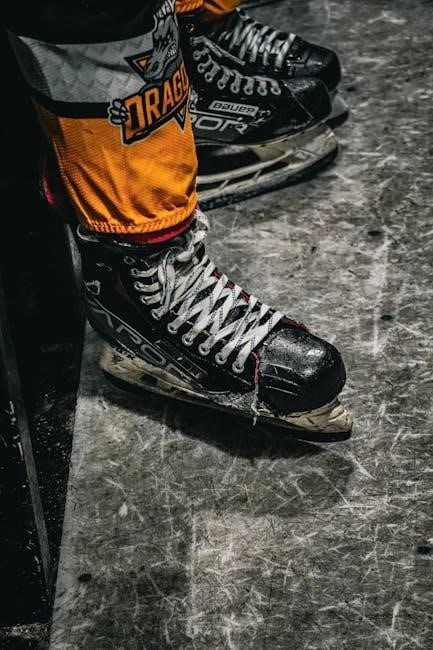
Leather, Synthetic, and Mesh Materials
Leather shoes offer durability and a classic style, making them ideal for formal and casual wear. Synthetic materials, such as PU and nylon, provide affordability and water resistance, perfect for active lifestyles. Mesh fabrics enhance breathability, crucial for athletic footwear, ensuring comfort during intense activities.
Eco-friendly options are gaining popularity, blending sustainability with performance. Understanding these materials helps in selecting shoes that align with personal preferences, whether for sports, work, or everyday use, ensuring both functionality and style.
Understanding Shoe Soles: Rubber, EVA, and More
Shoe soles are crucial for durability, traction, and comfort. Rubber soles are known for their grip and longevity, making them ideal for everyday wear. EVA (Ethylene-Vinyl Acetate) soles offer lightweight cushioning and flexibility, often used in athletic footwear. Other materials like polyurethane provide excellent shock absorption and are commonly found in hiking boots. The choice of sole material depends on the shoe’s purpose, whether for sports, casual use, or specialized activities. Modern designs also incorporate eco-friendly options, blending performance with sustainability. Understanding these differences helps in selecting shoes that meet specific needs, ensuring optimal comfort and functionality.
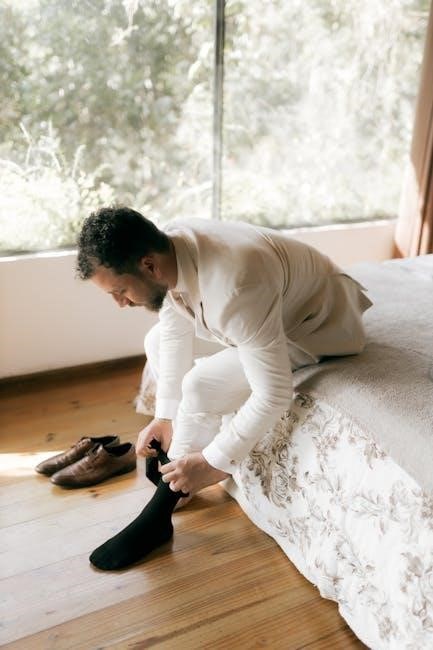
Eco-Friendly and Sustainable Shoe Options
Eco-friendly and sustainable shoe options are gaining popularity as consumers prioritize environmental responsibility. Many brands now use recycled materials, such as recycled rubber for soles and organic cotton for uppers, reducing waste and minimizing environmental impact. Plant-based alternatives like hemp and bamboo are also being incorporated into shoe designs. Additionally, some manufacturers are adopting sustainable production processes, such as using solar energy or water-free dyeing techniques. These eco-conscious shoes not only help reduce carbon footprints but also offer durability and comfort. By choosing sustainable footwear, consumers can support ethical practices while enjoying high-quality, stylish options that align with their values and contribute to a greener future.

Buying Guide
Assess your needs, budget, and lifestyle to make informed decisions. Consider fit, comfort, and quality, ensuring your choices align with your preferences and priorities effectively.

How to Choose the Right Shoe for Your Needs
Understanding your lifestyle and preferences is key to selecting the right shoes. Consider the activity, such as running, golf, or casual wear, and your foot type. Try shoes on and walk around to ensure comfort and support. Avoid shoes that require breaking in, as they may cause discomfort. Assess your budget and prioritize quality over quantity. Align your choice with your personal style and needs, whether for performance, durability, or aesthetics. By balancing practicality and preference, you can make an informed decision that enhances your comfort and satisfaction.
Trying Shoes On: Fit, Comfort, and Performance
When trying on shoes, prioritize fit, comfort, and performance. Walk around the store to assess how they feel in action, as standing still may not reveal discomfort. Avoid shoes that require breaking in, as they can cause discomfort. Ensure proper support and cushioning, especially for specific activities like running or golf. Pay attention to breathability and flexibility, which enhance performance. Don’t hesitate to test shoes thoroughly, as stores encourage this to ensure the right fit. By focusing on these factors, you can select shoes that meet your needs for both functionality and comfort, ensuring a satisfying purchase.
Spending Habits: When to Buy and When to Wait
Understanding your spending habits is crucial when purchasing shoes. If you find yourself buying a new pair every month or week, it may indicate excessive spending. Balance your wants and needs by assessing whether the purchase aligns with your lifestyle and budget. Consider the durability and long-term value of the shoes to avoid impulse buys. It’s wise to wait for sales or discounts if the shoes aren’t essential. However, if you need footwear for a specific purpose, like athletic performance or work, investing in quality is justified. By being mindful of your spending patterns, you can make smarter, more intentional purchasing decisions.
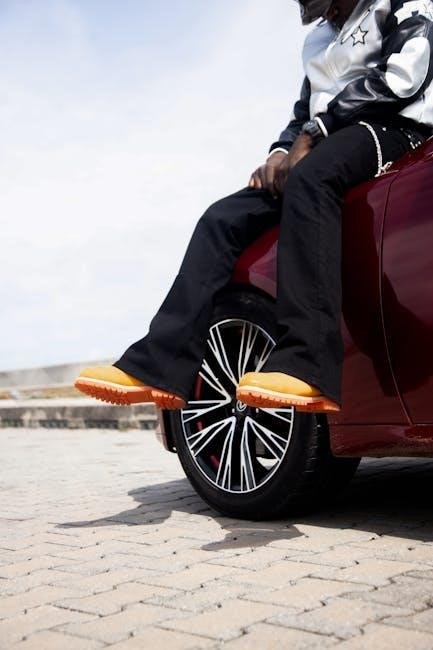
Maintenance and Care
Proper cleaning, protection, and storage are essential for extending shoe lifespan. Regular maintenance ensures durability and preserves style, keeping your footwear in great condition for years.
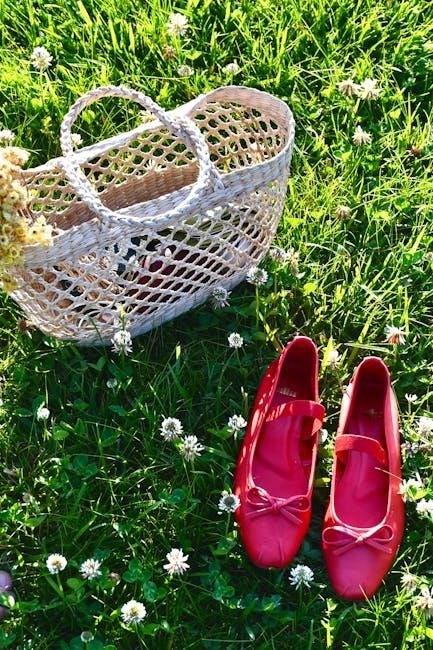
Cleaning and Protecting Different Shoe Materials
Proper cleaning and protection are crucial for maintaining shoe quality. For leather shoes, use a soft cloth and leather-specific cleaners to avoid damage. Synthetic materials can be wiped with damp cloths, while mesh requires gentle brushing to remove dirt. Applying waterproof sprays or creams helps protect against stains and moisture. Regular cleaning prevents odor buildup and extends lifespan. Always test cleaning products on a small area first to ensure compatibility. Avoid harsh chemicals that might degrade materials. Proper care ensures shoes remain durable, comfortable, and stylish for years. Regular maintenance is key to preserving your footwear investment.
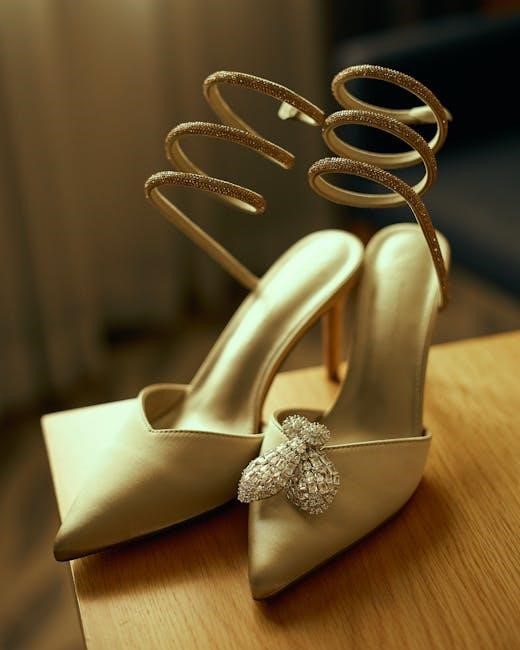
Storage Tips to Extend Shoe Lifespan
Proper storage is essential for maintaining shoe quality and longevity. Store shoes in a cool, dry place away from direct sunlight to prevent fading and material degradation. Use breathable cloth bags or shoe boxes to protect against dust and moisture. Avoid stacking shoes on top of each other, as this can cause deformation. Stuffing shoes with paper or shoe trees helps maintain their shape. For seasonal shoes, clean them thoroughly before storage to prevent mold or mildew. Rotate your shoes regularly to ensure even wear and tear. By following these tips, you can extend the lifespan of your footwear and keep them looking their best.
Current Trends and Future Predictions
Sustainability and technology drive current shoe trends, with eco-friendly materials and smart designs gaining popularity. Future predictions include customizable 3D-printed shoes and advanced cushioning systems.
2025 Shoe Trends: What’s In and What’s Out
In 2025, sustainability and comfort dominate footwear trends. Eco-friendly materials, gender-neutral designs, and customizable options are in vogue. Bright colors and bold styles are giving way to minimalist aesthetics. Athletic shoes with advanced cushioning, like New Balance’s Fresh Foam, remain popular. Meanwhile, fast fashion and overly flashy designs are losing favor. Practicality and versatility are key, with consumers prioritizing durability and comfort over fleeting trends. The shift reflects a growing awareness of environmental impact and a desire for timeless, functional footwear. This year, expect a focus on innovative materials and technology, such as 3D-printed shoes, catering to diverse lifestyles and preferences.
The Role of Technology in Future Shoe Design
Technology is revolutionizing shoe design, offering innovative solutions for comfort, performance, and sustainability. Advanced materials like 3D-printed soles and biodegradable fabrics are becoming mainstream. Customization is also on the rise, with brands using AI to create personalized fits. Smart shoes equipped with sensors to track fitness metrics are gaining popularity. Additionally, sustainable manufacturing processes are being adopted to reduce environmental impact. These advancements ensure that future shoes will be more functional, eco-friendly, and tailored to individual needs. As technology evolves, it will continue to shape the footwear industry, blending style with cutting-edge innovation to meet the demands of modern consumers.
